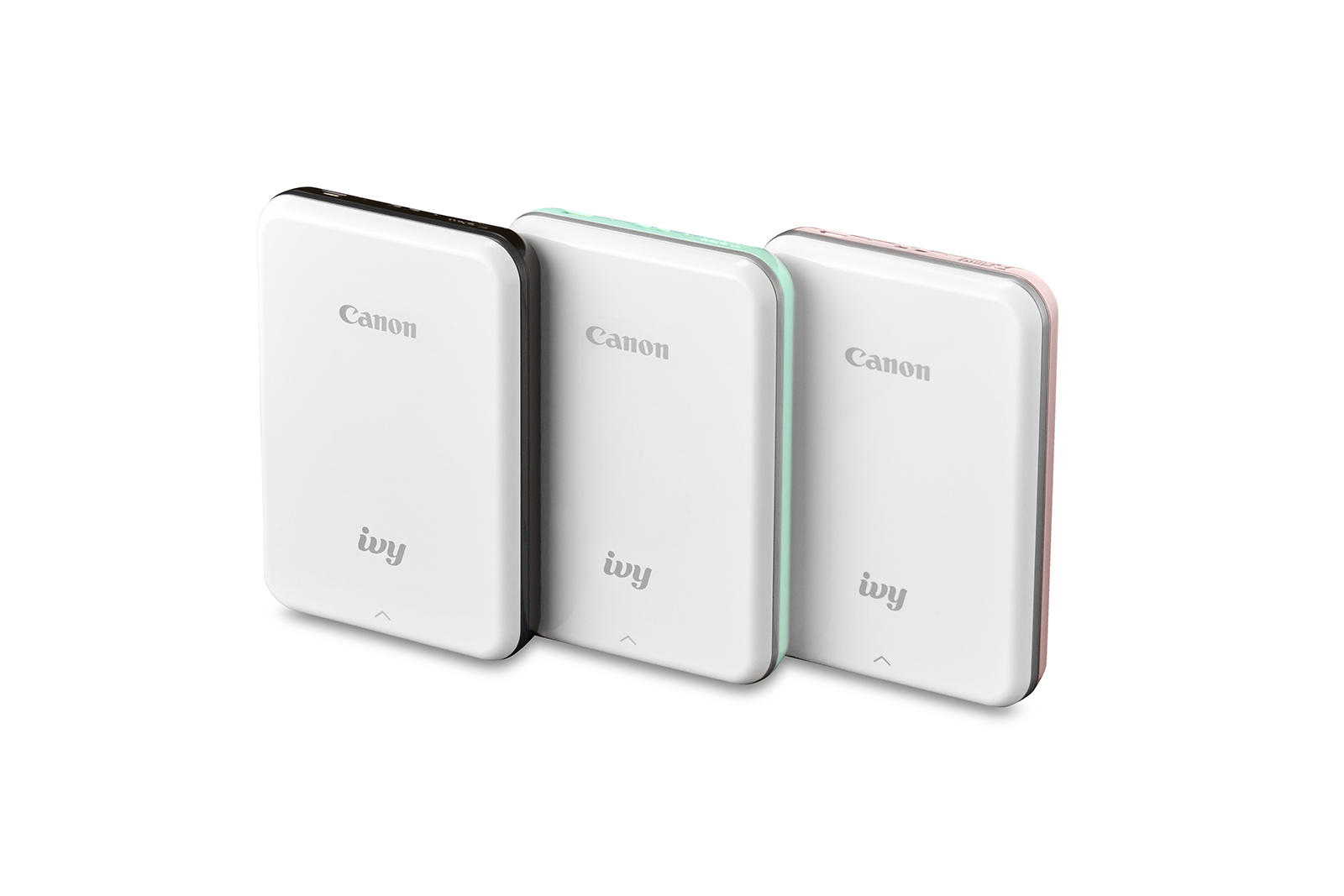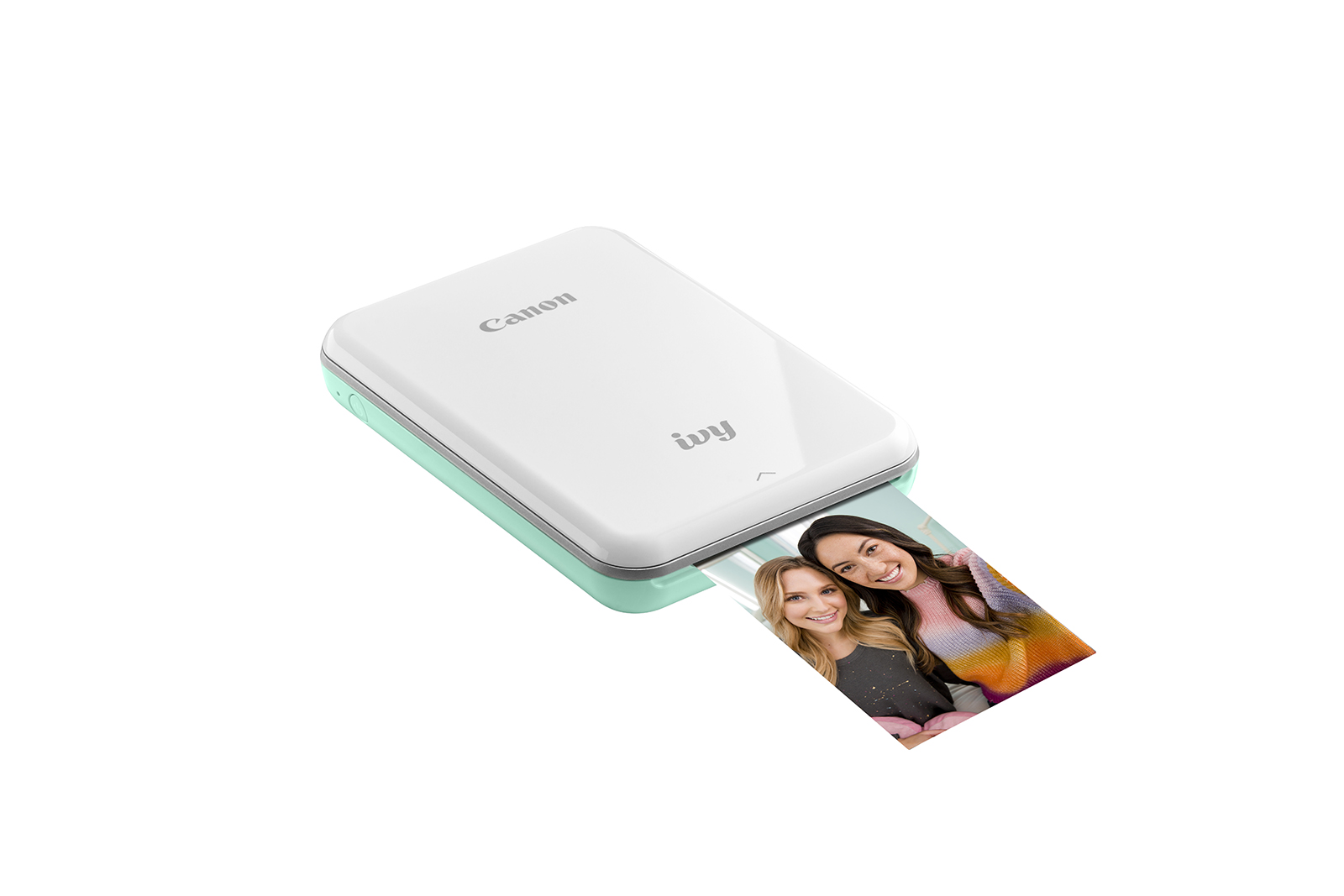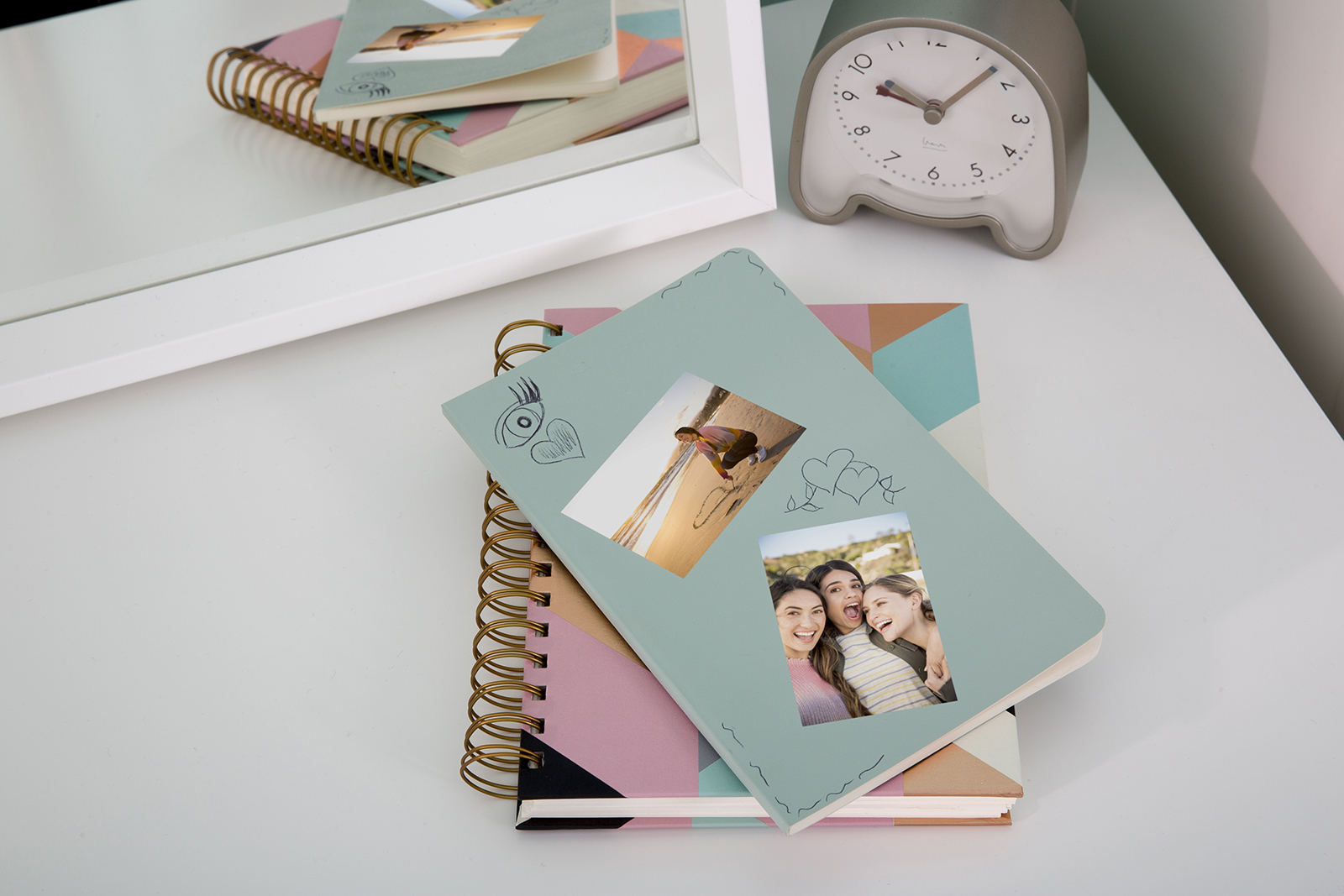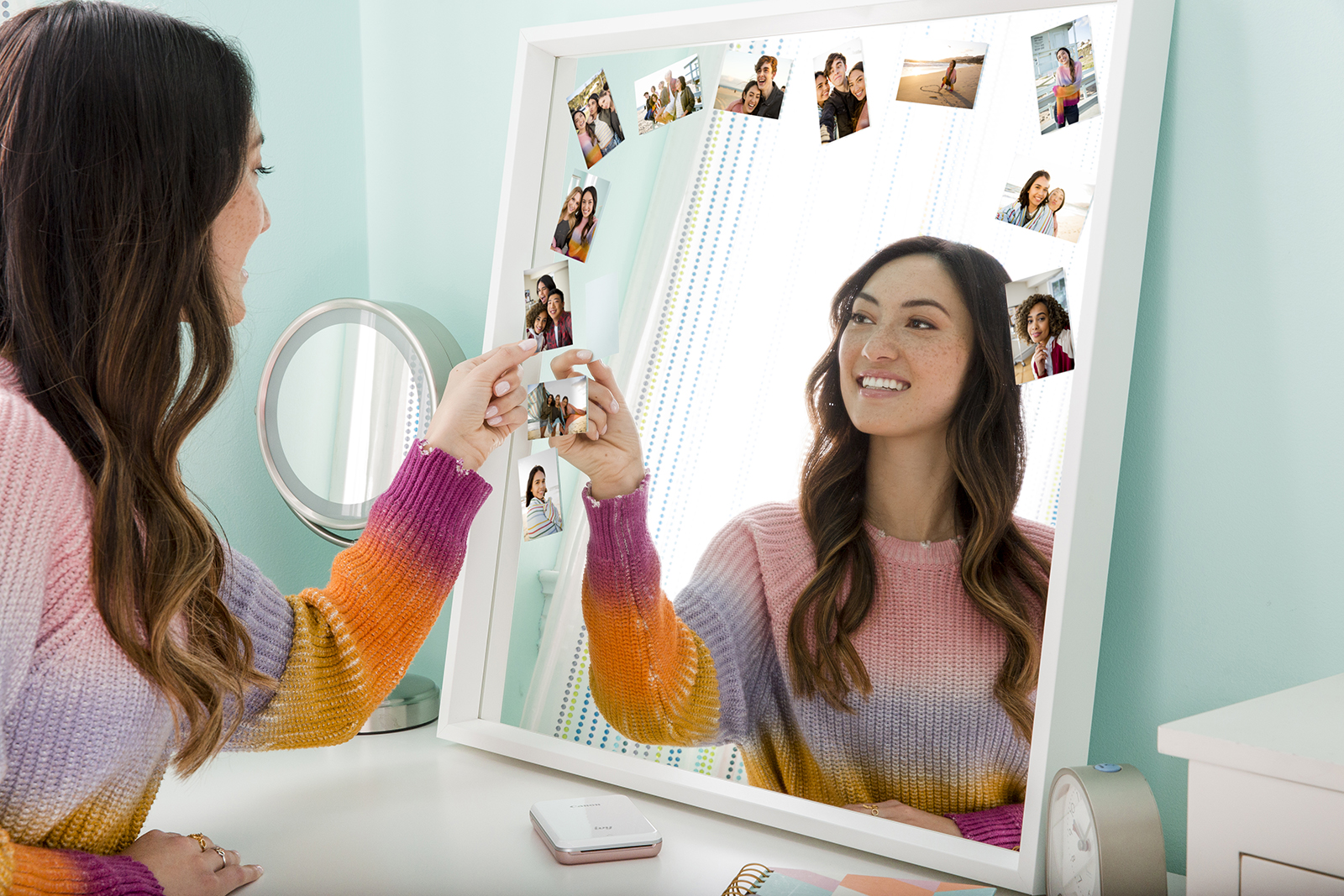Canon just launched its smallest photo printer yet — a little device called Ivy that spits out 2 x 3 Zink photos. On Thursday, April 19, Canon USA announced the Ivy Mini Photo Printer, a portable cartridge-free photo printer.
The printer uses Zink, or paper with embedded ink crystals, in order to create a small, portable design that doesn’t require ink cartridges. While mini Zink printers have been around for years, Ivy is Canon’s first foray into 2 x 3 photo printers, making it the company’s smallest and lightest printer yet.
Available in mint green, gray, and rose gold, the little printer is connected, with the Canon Mini Printer App that allows users to both control the print settings and edit photos. The app includes augmented reality “face distortion” filters, alongside other tools popularized by social media cameras, including stickers, frames, text, and a drawing tool. The app can print full-sized 2 x 3 inch images, create a gallery of four or nine prints on the sheet, or choose from a handful of collage templates.
Compatible Zink paper is available in regular photo sheets or sticky back stickers. The Zink prints are also smudge-free and can resist water spills, Canon says. The company says a Smart Sheet paper to calibrate the printer allows the little printer to stand up to Canon standards.
“The proverb ‘good things come in small packages’ couldn’t be more true for the first 2 x 3 photo printer from Canon U.S.A.” Kazuto Ogawa, president and chief operating officer of Canon U.S.A., Inc., said in a statement. “It’s our smallest and lightest printer yet, and the company is excited about giving customers more access to creatively connect and instantly share memories than ever before from the palm of their hand.”
Canon Ivy Mini Printer sales launched today, retailing for about $130, including a ten pack of paper. Additional paper packs are available for about $10 for a 20 pack and $25 for a fifty sheet pack.
Canon’s first mini photo printer joins a list of growing tools made possible — or at least made portable — by Zink paper’s ink-free design. Along with small printers like the Ivy and Polaroid’s Zip, ZINK is also used in digital cameras with built-in printers and even a Moto Mod.
Editors' Recommendations
- The best photo printers you can buy in 2024
- Canon’s Ivy Cliq+ 2 instant camera can print circular stickers









